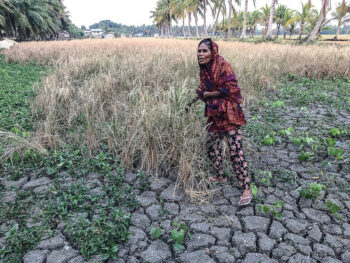
NAAWAN, Misamis Oriental (MindaNews / 19 June) – The Philippines is regularly shaken by earthquakes.
The Philippine Institute of Volcanology and Seismology (Phivolcs) reported that an average of 20 earthquakes is recorded in the Philippines per day with at least 100 to 150 quakes being felt per year.
Phivolcs explained that earthquakes occur in the Philippines because it is part of the Pacific Ring of Fire. And due also to its geographic and tectonic location, the country is seismically active.
Earthquakes are caused by the movement of the earth’s many tectonic plates that underlie both continents and oceans. These plates collide, slide past, and move apart from each other. Where they collide and one plate is thrust beneath another, powerful earthquakes, tsunamis, volcanic eruptions, and landslides occur.
Until now, the occurrence of earthquakes is beyond science to predict. What scientists can do is to map out earthquake scenarios, describing the estimated ground shaking (intensity), potential hazards, and impacts that can be caused by a specific earthquake.
“An effective scenario is realistic, bound with science-based facts and close to reality; specific, with specific location and time constrained if possible; and locally-relevant, having a role to the disaster-preparedness of the public,” says Philvocs.
Knowing the worst-case scenario of an earthquake may help one to lessen the impact of the disaster. If given enough data, the agency said that the country may determine specific impacts to a locality.
Phivolcs has warned that Metro Manila, parts of Bulacan, Rizal, Laguna, Cavite and even Batangas might be affected by an Intensity 8 shake – the Big One.
The state seismology bureau estimated that the potential impacts of such “worst-case earthquake scenario” may result to around 33,500 deaths in Metro Manila alone, with 114,000 people seriously injured, 18,000 fire casualties, and widespread damage on properties and infrastructure.
But as to when this big one will happen, no one really knows. Again, earthquakes are unpredictable; they just occur.
Hurricanes, floods, and tornados can now be predicted, although to differing degrees of reliability. But earthquakes have remained elusive.
The US Geological Survey (USGS), which has the largest concentration of geology scientists, declares that earthquakes remain unpredictable, much more a big one. The USGS website says it all and clearly: “Neither the USGS nor any other scientists have ever predicted a major earthquake. We do not know how, and we do not expect to know how any time in the foreseeable future.”
The big one in Metro Manila sends some jitters to some but is simply shrugged off by many. So life goes on as usual.
It could be a blessing if we do not know when the big one or anything calamitous in our lives will occur: we will continue to enjoy what life has to offer. If one knows he has cancer and has only six months to live, that surely will make a miserable life.
Ignorance can be bliss.
(MindaViews is the opinion section of MindaNews. William R. Adan, Ph.D., is retired professor and former chancellor of Mindanao State University at Naawan, Misamis Oriental)







